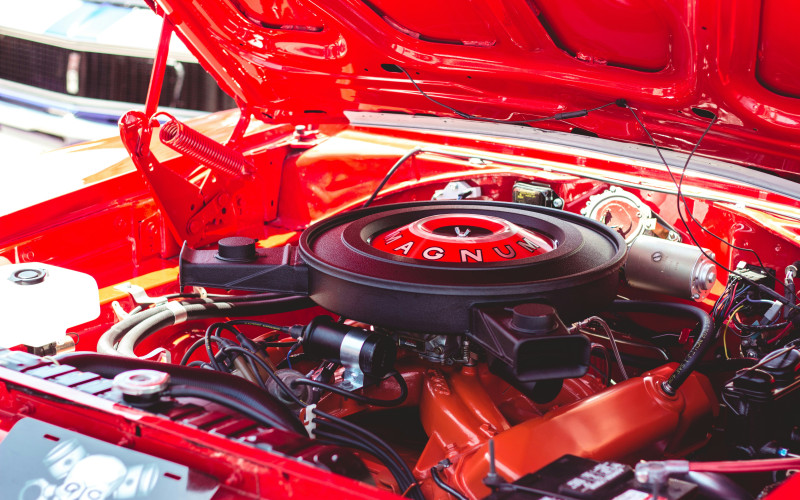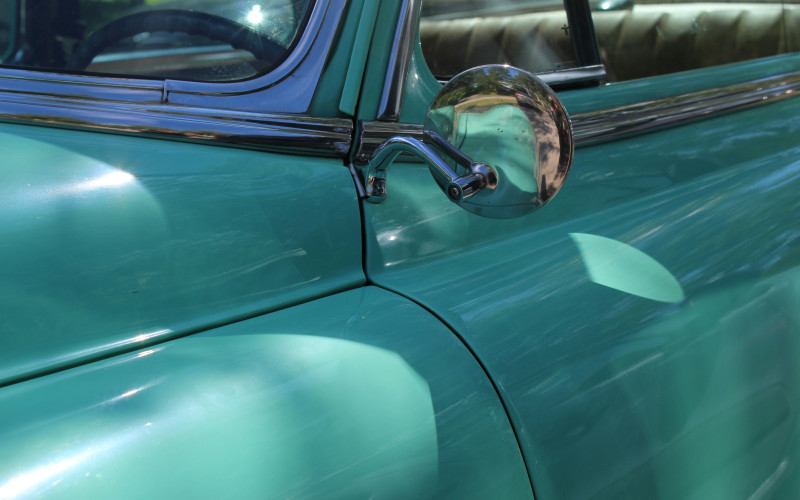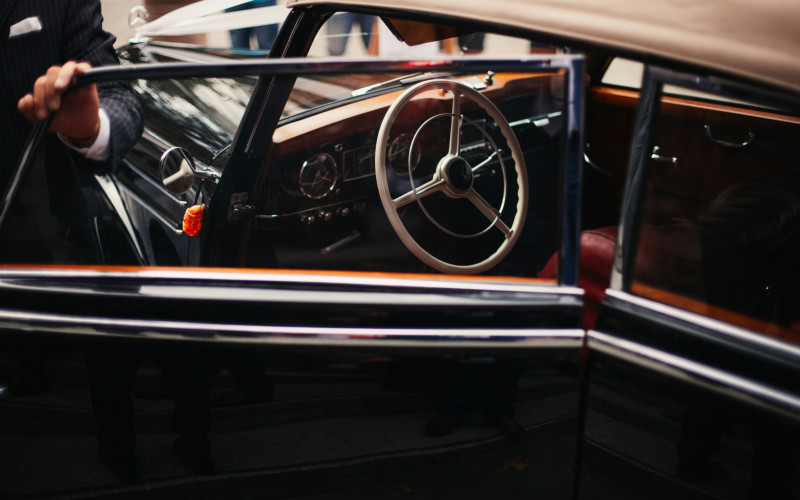Automotive Wiring Harness
Ever tried tracing a single wire through a car restoration project? This is awful. That’s where an automotive wiring harness comes in. Chaos becomes order. It runs your headlights and even those cool old dashboard gauges. To restore or upgrade a classic car, it is essential to understand wiring harnesses.
Let’s break it all down in a clear, conversational way.
Definition of a Wiring Harness
A wiring harness is essentially the nervous system of your vehicle.
Wires, terminals, and connectors—a neat little package. Electricity and signals zip around the car.
In classic cars, these harnesses connect systems like:
- Engine ignition
- Battery
- Headlights and taillights
- Gauges and sensors
- Sound systems
It's not just about electricity. It's also about ensuring it flows efficiently, safely, and reliably.
Anatomy of a Wiring Harness
Components
A standard automotive wiring harness includes:
- Wires: Typically made of copper, insulated with plastic.
- Connectors: Used to join wires to components, such as relays and sensors.
- Terminals: Metal ends that secure wires inside connectors.
- Fuses and Relays: For protection and control.
- Sleeves and Tapes: For organization, shielding, and heat resistance.
Types of Wiring Harnesses
Depending on your vehicle and needs, here are the common types:
- Engine Wiring Harness — Controls ignition, fuel injection, and sensors.
- Dashboard Harness — Manages indicators, dials, and lighting.
- Chassis Harness — Powers lights, suspension sensors, ABS.
- Body Harness — Covers doors, windows, and infotainment.
When restoring a classic car, a custom wiring harness is necessary. This helps you add modern parts while keeping the car's original charm.
Design Considerations
Wiring harnesses aren't one-size-fits-all.
Here’s what engineers and restoration experts consider:
- Vehicle layout and dimensions
- Load requirements and voltage
- Temperature resistance
- Vibration resistance
- Safety and redundancy
Functionality
So, what does a wiring harness do?
It channels and controls electrical power. Without it, your car is just a metal shell.
Think of it like this:
- Starting the engine: The harness connects the ignition switch to the starter.
- Turning on lights involves carrying signals from the switch to the bulbs.
- Monitoring sensors: Send data from your engine to the dashboard.
A faulty harness can lead to electrical shorts, malfunctioning lights, or worse—an inoperable vehicle.
Manufacturing Process
Creating a wiring harness is no small feat. Here's a quick rundown:
- Design and Planning: Engineers map out electrical needs and layout.
- Wire Cutting: Each wire is cut to exact lengths.
- Stripping and Crimping: The insulation is removed, and the terminals are crimped.
- Assembly: Wires are grouped, labeled, and inserted into connectors.
- Testing: Voltage and continuity tests ensure it all works flawlessly.
Big manufacturers rely on semi-automated processes. At D&C Classic Garage, we provide customized solutions made by skilled professionals.
Applications Across Industries
While wiring harnesses are common in vehicles, they're used far beyond classic cars:
- Aircraft: To power avionics and navigation.
- Boats and Yachts: For onboard lighting and engine control.
- Industrial Machines: For automation and diagnostics.
- Home Appliances: Think of your washing machine or refrigerator.
A classic car's wiring harness is essential; it's the heart of the system, keeping everything running.
Challenges and Innovations
Wiring Harness Standards for Automotive
Modern automotive systems are highly regulated. Standards like ISO 6722 ensure wire insulation can withstand harsh conditions. U.S. regulations often involve:
- SAE J1128 for low-voltage wires
- RoHS compliance to limit hazardous materials
Vintage cars didn’t have to meet these, so upgrading is often necessary.
Types of Connectors Used in Automotive Wiring Harness
Connectors are the unsung heroes. Here are a few types:
- Blade Connectors: Common and easy to use.
- Bullet Connectors: Rounded for snug, single-wire connections.
- Weatherproof Connectors: For moisture-prone areas.
- Pin Connectors: Multi-wire plugs used in electronic control unit (ECU) systems.
Choosing the wrong connector can lead to failure down the road.
Innovations
- 3D Modeling: Speeds up harness design and layout testing.
- Flexible Printed Circuits: Used in tight areas to replace bulky wiring.
- Smart Harnesses: Integrate microchips for self-diagnosis and updates.
A 2024 report from Allied Market Research says the global automotive wiring harness market will reach $81.2 billion by 2032. The demand for safer, electric cars is a major factor driving the growth of this market. Think about how many people want both!
(Source: www.alliedmarketresearch.com/automotive-wiring-harness-market )
Automotive Wiring Harness with D&C Classic Garage
Here at D&C Classic Garage, we don’t just restore classic cars. We make them better.
When it comes to wiring, we know that vintage setups were never designed for modern technology. We provide custom automotive wiring harness upgrades. These upgrades keep your car’s integrity intact and power features like:
- Upgraded sound systems
- Modern LED lighting
- EFI conversions
- Digital dashboards
We build with the latest automotive wiring harness technology. It's sturdy and it looks good; a winning combination for anyone who appreciates quality and style.
We installed various connectors for car wiring. These work great with what you've got.
We can map, build, and install a harness for any ride. Whether it’s a rusty '60s Mustang or a pristine '57 Chevy, we’ve got you covered.
You bring the dream car. We get it ready to hit the road.
Ready to Upgrade?
If you're restoring a classic car and the wiring feels like a puzzle missing half the pieces, let us help.
Contact D&C Classic Garage today for a consultation. We'll design and build a wiring harness perfectly tailored to your classic car and your unique ideas.
Because when it comes to classic cars, great looks deserve great wiring.
FREQUENTLY ASKED QUESTIONS
What is the primary purpose of a wiring harness?
To efficiently transmit electrical power and signals throughout a vehicle while keeping wires organized, safe, and protected.
Why are wiring harnesses essential in the automotive industry?
They connect all the electrical components, enabling the car to function properly. This intricate network is a fundamental aspect of modern vehicles.
What challenges do modern wiring harnesses face?
Wiring is less complicated, making the system more reliable and allowing it to be built faster. Safety and communication are also better.
Can wiring harnesses be recycled?
Yes. Many harnesses utilize recycled copper and aluminum. Some specialized facilities even recover the plastic insulation.
RELATED POSTS

Owning a classic car is a dream for many people. Classic cars aren’t just vehicles—they are pieces of history, symbols of style, and a source of pride. Whether it’s a Mustang, Camaro, Corvette, or another timeless model, a classic car represents passion and nostalgia. But with age comes wear and tear. Even the most carefully stored classic cars show signs of needing professional restoration.

Getting body work done and painting your classic or custom car is more than just a line item on a project—it’s a milestone. By the time your vehicle is paint-ready, you’ve likely spent countless hours and invested serious money into making it shine. A high-quality paint job can easily cost thousands, and protecting that investment isn’t optional. With the right care, your classic car’s paint and chrome will turn heads in Reno, Sparks, and beyond, while keeping rust, oxidation, and fading at bay.

Learn the ideal tire pressure for classic cars to ensure safety, performance, and longevity. Tips for maintaining correct PSI and avoiding common tire issues.

Ever tried tracing a single wire through a car restoration project? This is awful. That’s where an automotive wiring harness comes in. Chaos becomes order. It runs your headlights and even those cool old dashboard gauges. To restore or upgrade a classic car, it is essential to understand wiring harnesses.
